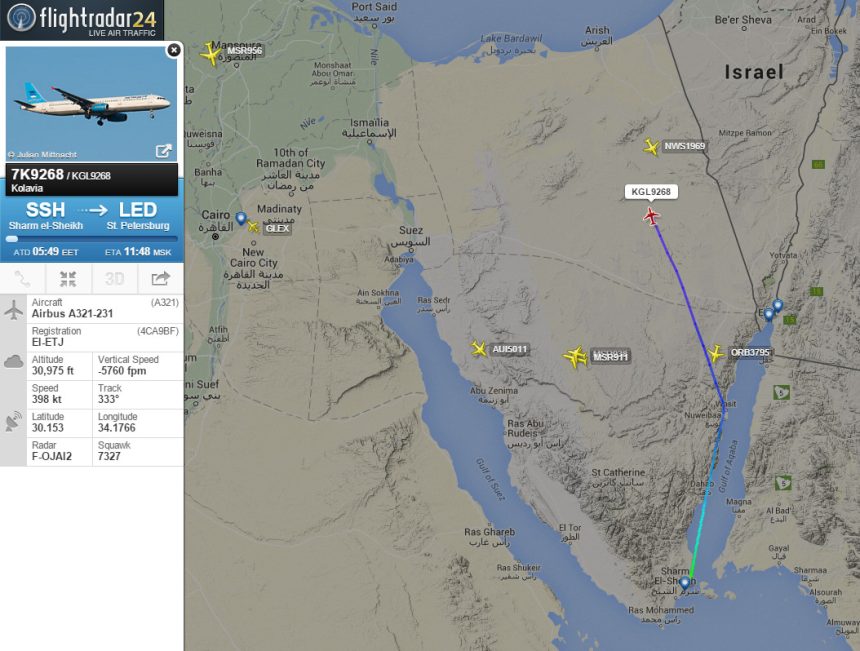What we know and what we don’t know about the crash of Metrojet A321 in Egypt.
On Oct. 31, at around 04.13 UTC, Metrojet flight 7K9268, an A321 flying from Sharm el-Sheik, Egypt, to St. Petersburg, Russia, crashed into the Sinai Peninsula killing all the 224 people on board.
Since the aircraft was broadcasting ADS-B data, some interesting details about the flight until the rather mysterious crash could be gathered by some receivers located in the area.
Based on such data, made available by Flightradar24.com, the aircraft was climbing to a target autopilot altitude of 32,000 feet at 407 knots when “something” happened: after a brief descent, the A321 suddenly climbed past FL320, with a significant fluctuation in vertical speed (that reaches -5760 fpm).
.@ahem_again Here’s the CSV data interpolated for time. Speed axis legend on right. There is one spike each graph. pic.twitter.com/PMRAaV5ObV
— Brian Topping (@briantopping) November 2, 2015
The aircraft, or what remained of it, then started a steep descent until it crashed into the desert.
According to the information released so far, the pilots did not radio any distress call nor did they transmit the emergency transponder code 7700: whatever happened, they had no time to use the radio.
What may have happened is subject to speculations.
ISIS claimed to have downed the plane with MANPADS (Man Portable Air Defense Systems), something nearly impossible, despite the fact that the overflown territory is the scene of fighting between Egyptian security forces and terrorists, considered that the aircraft was flying well above the envelope of such systems.
For sure a surface-to-air missile could have reached the altitude of the Metrojet flight but it’s not clear whether SAM batteries are located within firing range.
Although the airline has claimed the aircraft was in perfect conditions, a structural collapse can’t be completely ruled out; actually investigators believe this to be less likely as the aircraft broke into two main parts only.
Metrojet said that they believe the aircraft broke as a consequence of a mechanical force acting on the aircraft a version coherent with several scenarios: from the mid-air collision with something (unlikely, since there would be debris of two aircraft..) to the missile, along with the already mentioned collapse and missile.
Some piece of debris has outer edges bent outwards, suggesting an explosion from the inside of the aircraft, as the one caused by a bomb. According to the media reports, this is the most likely cause of the incident for some of the investigators.
Although there is no direct evidence of any terrorist involvement yet, nothing can be ruled out a priori.
Image credit: Flightradar24.com
Related articles
















